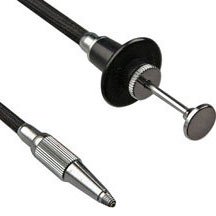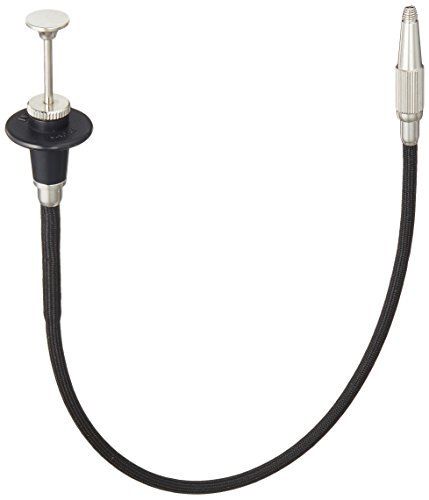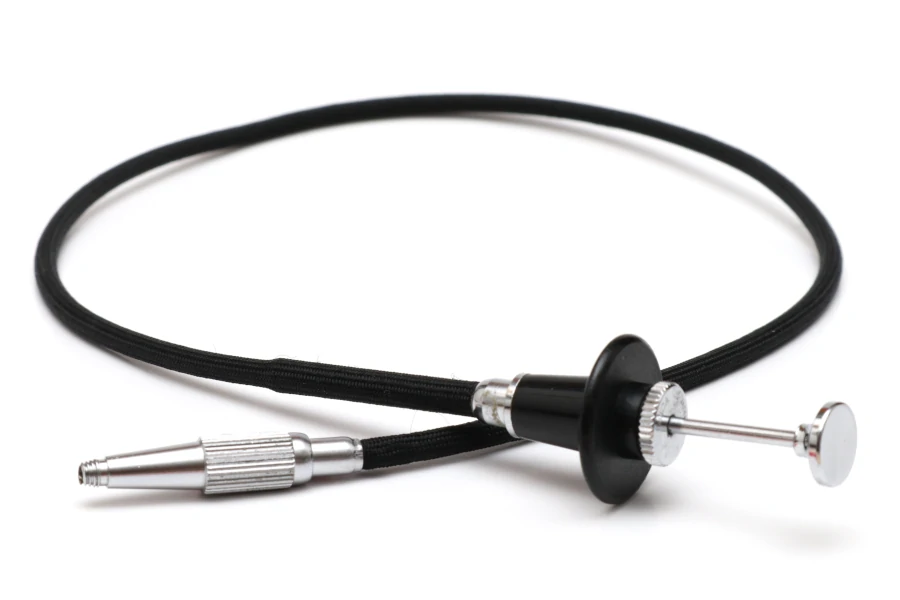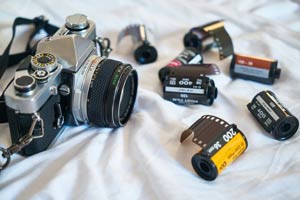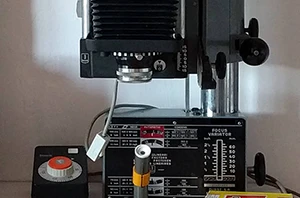What is a cable release?
A cable release, also known as a threaded cable release, is a device used to actuate the shutter of a camera without touching the shutter button. It consists of a flexible wire moving within a sheath, with a threaded connector on one end, an a plunger on the other. The sheath is usually vinyl, although on some higher-end models it can be covered with fabric or metal armour. The cable release is a purely mechanical device, as opposed to an electronic remote shutter release.
Cable releases are one of the most useful photographic accessories. Moreover, they are quite affordable and extremely small and light, so you have no excuse not to have one in your bag. However, keep in mind that in order to use it, your camera or lens (when equipped with a central shutter) must have the appropriate threaded receptacle. Depending on the camera design, the receptacle can be either incorporated into the shutter button itself, or positioned elsewhere on the camera body.
Even though cable releases are mainly seen as film camera accessories, there are plenty of digital cameras utilising them, if only for the nostalgia factor. Mechanical cable release receptacles are mostly found on retro styled digital cameras like the Fujifilm X100F, Nikon Df and, of course, on Leica M rangefinders.
What are the different cable release standards?
Cable releases are one of the few instances in camera equipment manufacturing where the different makers (mostly) settled on a common standard. Nowadays, the thread on the cable release receptacle is standard and is the same on almost all photographic equipment. Surprisingly, however, for such a widespread interface, the actual specifications for the thread itself are rather obscure. It a tapered right-hand (clockwise) thread, conforming to JIS standard B7104-1971. Alternatively, some devices use a straight 3.2mm dia x 0.5mm pitch thread, in which you still can thread a tapered cable release. The Nikon AR-3, pictured at the top, is an excellent example of the most popular type found on the market today.
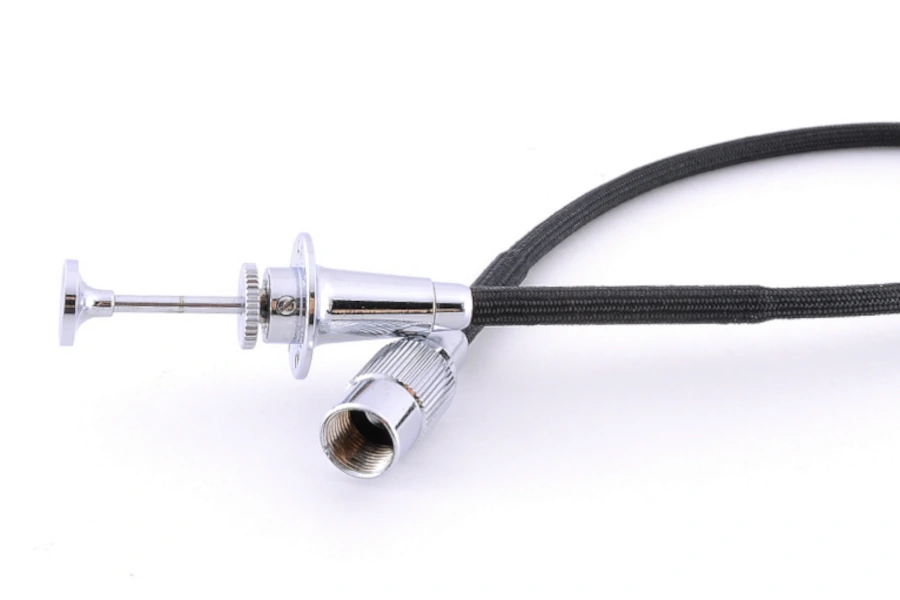
Notable exceptions to this unification are some early Leicas, Nikons and Yashica TLR cameras. On these cameras, the cable release receptacle is threaded collar around the shutter button. The cable for these cameras ends in a wider, female thread, as seen in the Nikon AR-2 pictured above. The receptacle’s thread has a 0.305 inches outer diameter with 32 threads per inch (TPI), with a thread root diameter of 0.302 inches. Adapters exist that allow a standard cable release to be used with this kind of shutter release receptacle.
What are the different types of cable releases?
Single cable release
The most ubiquitous type of cable release, this is what most people think of when asked about one. Not much to say about it, apart from the fact that there are locking and non-locking cable releases. The difference between them is that locking cable releases come with a mechanism to fix the plunger in a depressed position. The locking is usually done either by a thumbscrew or a locking collar, like in the Nikon AR-3 shown above.
Locking cable releases are used for long exposures in conjunction with Bulb mode, you can read more about it below. Without using the locking function, a locking cable release works no different than a non-locking one. Even though they tend to be a little pricier, it’s best to get one that has a locking mechanism. Even if you don’t need the locking function now, it’s better to have it and not use it, than to need it and not have it.
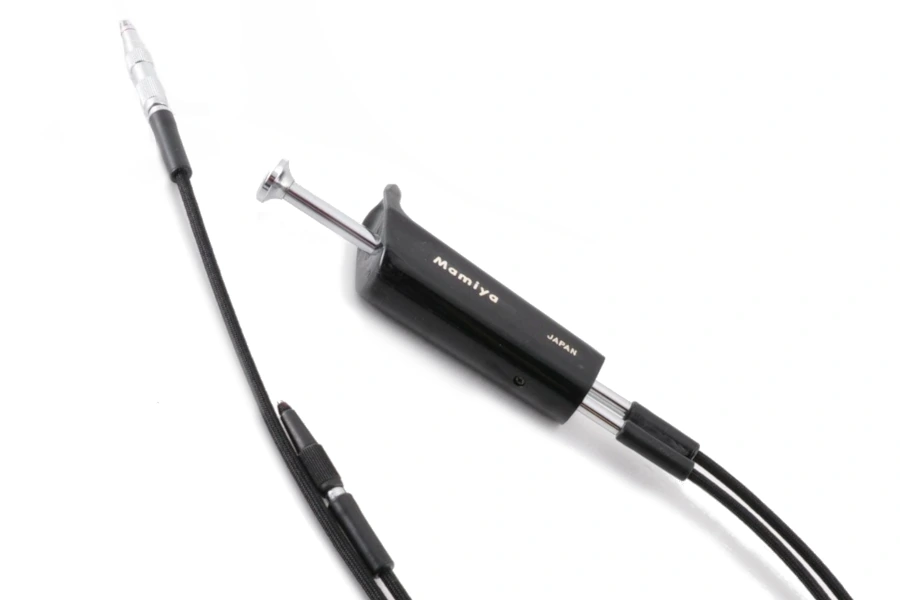
Double cable release
A double cable release simply has two ends to screw in different parts of the camera, both controlled with a single plunger. Certain cameras, like the Mamiya RZ for example, need these releases for correct operation. In the Mamiya, the mirror lock-up is triggered by a mechanism within the camera body, while the shutter itself is positioned in the lens. When shooting in mirror lock-up mode, both are triggered separately and independently. What a double cable release does, in this setup, is to first lock-up the mirror, and with a bit more travel of the plunger, trigger the shutter.
Double cable releases are also used in certain macrophotography setups. For example, when shooting with the Olympus OM, the Olympus Auto Bellows and a Zuiko lens, using a double cable release you can retain auto-diaphragm functionality. One end of the cable release in threaded into the camera, and the other into the lens mount on the Auto Bellows. What the double cable release does in this setup is to first stop down the lens to the predetermined F-stop, and then trigger the camera.
There’s nothing wrong with substituting a double with two single cable releases, and many people do just that. Double cable releases are harder to come by, and they are certainly more expensive. However, using two cable releases instead of a double can be a little or a lot less convenient in certain situations.
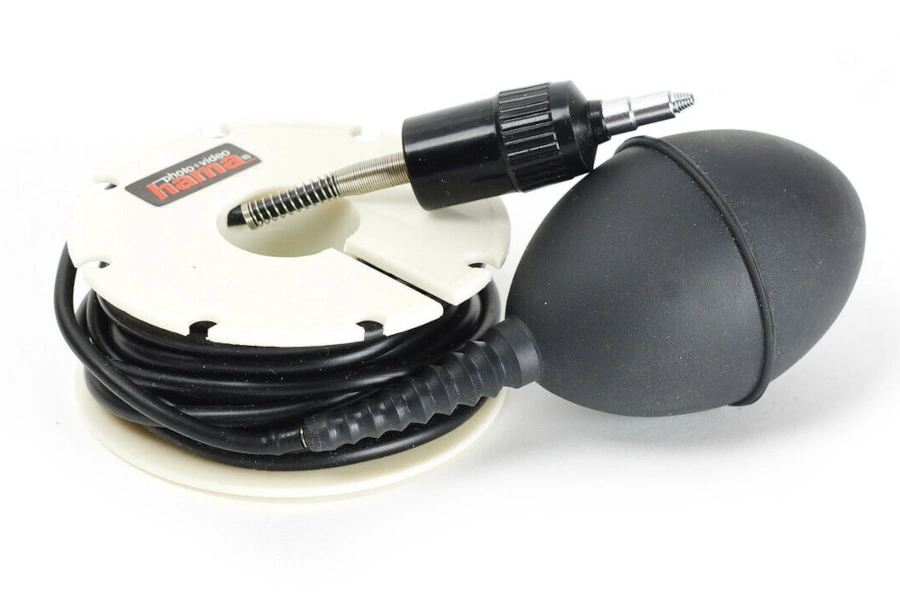
Air shutter release
Air shutter releases, also known as pneumatic shutter releases are a specialist type of a single cable release. Because of the construction of traditional cable releases, at a certain length the friction of the wire within the sheath starts to make operating the plunger prohibitively difficult. This is why air shutter releases were invented. They constitute a squeeze bulb, a length of flexible tubing and an air operated piston at the end which is attached to the camera. When you squeeze the bulb, the air pressure within the line increases, which in turn forces the piston out, actuating the shutter.
Typical length of an air shutter release is 20 feet, or just over 6 meters, excellent for self portraits. Because of their construction, no locking air shutter releases exist. You’d have to keep the pressure within the device high for the duration of the bulb exposure, which would not be very reliable, so they are just not made this way. Also, no double air shutter releases exist, perhaps because the extra effort needed to activate the two ends simultaneously has proven impractical in this design.
Speaking about air shutter releases, we also have to mention the venerable Packard shutter here. One of the oldest shutter designs out there, it’s a large format lens shutter with blades driven by an air powered piston. As such, it can only be operated with an air shutter release. However, it does not use regular type air shutter releases, as it does not have the standard cable release thread receptacle. Instead, a direct pneumatic connection is made between the shutter piston and the squeeze bulb.
What is a cable release used for?
Mechanical shutter release cables are useful in a variety of photographic situations, we’ll briefly discuss the most common ones below:

Reduce vibrations
The main reason for most photographers to reach for the cable release is to reduce vibrations when using slow shutter speeds and/or long lenses from a tripod, or when shooting macro. Paired with mirror lock-up, a cable release is the only way to get 100% stable exposures without resorting to a self timer. Even if you are very careful, and your tripod is extremely heavy and rock solid, when your shutter speed goes above 1/2 a second, not using a cable release and mirror lock-up is just asking for trouble.
A cable release is also very useful if you substitute your tripod for a bean bag, or just prop your camera somewhere for a shot. Once you’ve nailed the frame, it’s much easier to trigger the shutter without disturbing the position if you use a cable release.

Long exposures
The second most popular use of cable releases is to make long exposure photographs. Most film camera shutters only go up to 1 or 2 seconds, and every long exposure photographer worth their salt knows that’s far too little. To go any longer, most cameras offer what’s known as Bulb mode, often marked just as B. In this mode, the shutter opens when you press the button, and stays open as long as you keep pressing it. However, there are a couple of practical problems with this.
First, as discussed above, it’s very difficult to depress the shutter button, and keep it pressed for any length of time without introducing some shake into the camera. Second, if you, like me, like extremely long exposures, pressing that shutter button is quickly going to get very annoying. Luckily, the humble cable release is the solution to both of these problems. Just make sure you get a locking one!
Convenience
Sometimes, it’s just easier to use a shutter release cable, than it is to reach for the camera’s shutter release button. For example, when using a camera mounted on a copy stand, you might find the button just a bit too high. A cable release is a perfect solution to this issue.
In fact, convenience is mostly why large format photographers use cable releases. Pretty much all modern large format shutters have a shutter release lever, much like the shutter button on a compact camera. However, pressing it is awkward, and you run the risk of disturbing your carefully set composition.

Multiple exposures
Any time you want to take several pictures in a row without moving your camera, for example when bracketing or focus stacking, a cable release will greatly increase your chances of doing so without disturbing your framing. Of course, you’ll still need to cock the shutter and/or rewind the film, unless you camera automatically does this for you. Multiple exposures on the same piece of film are particularly easy with a view camera, especially if you have a self-cocking shutter like a Prontor Press or Professional.

